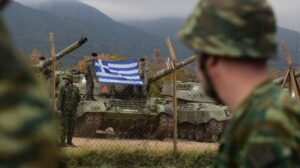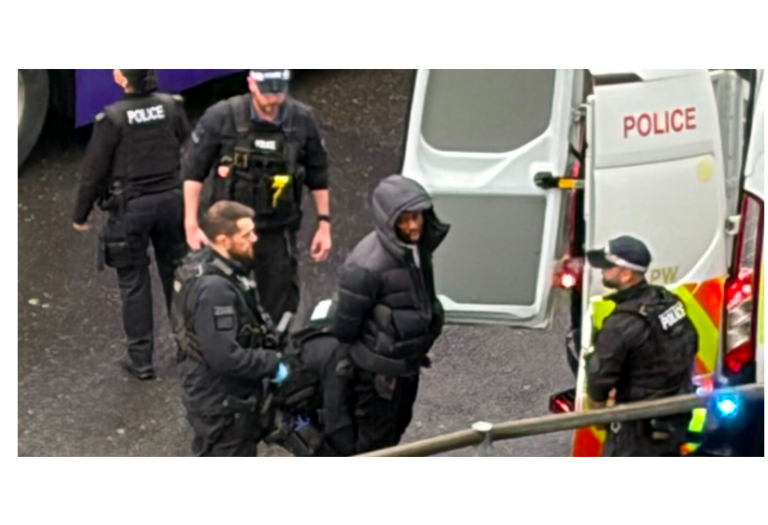The multiplication of combat power, the use of high technology, and the ability to deter any threat are at the heart of the new structure of the country’s Armed Forces.
Greece, which is in talks with Israel to leverage its experience in creating its own “Iron Dome,” a multi-layered anti-air, anti-missile, and anti-drone system that can intercept hypersonic missiles even outside Earth’s atmosphere, is strengthening itself on all levels.
The design involves the Air Force acquiring 200 4.5th and 5th-generation aircraft for the Air Defense, the Navy being reinforced with 16 main surface combat units, the islands being “fortified” with 3rd-generation battle tanks and the addition of long-range strategic missiles, as well as the use of unmanned vehicles, drones, and anti-drone systems at each unit. Additionally, the Armed Forces will acquire their own satellite.
The design for the new structure of the Armed Forces by 2035 seems to be straight out of the dreams of any Greek who envisions a country with strong deterrent power, as it appears to have answers at every level to every modern challenge, as outlined on the battlefields. From the Iron Dome to anti-drone systems and counterattack weapons, hybrid threats, and cyberwarfare, the Armed Forces are transforming into a cutting-edge and powerful means of maintaining not only Greece’s territorial integrity but also peace in the broader region.
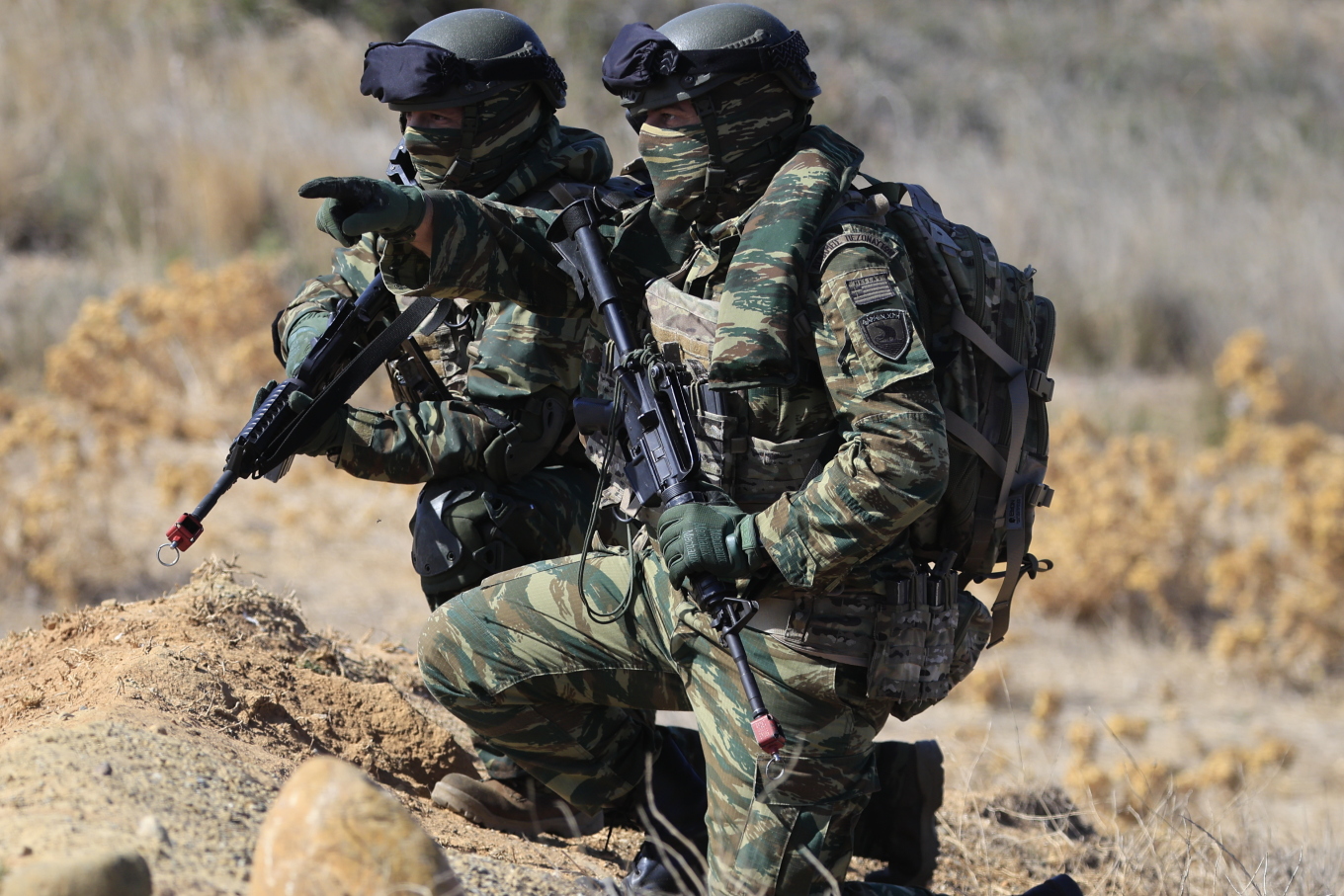
This is the biggest reform ever in the history of the Greek state in the field of National Defense and has as its central axis/philosophy the creation of a modern, tactically flexible, and well-equipped army, which is smaller in size but with greater firepower, capable of operating both in large formations and at the level of small and flexible mechanized units, with autonomous drones and anti-drone capabilities, and modern weapons systems, including satellite communications, electronic warfare systems, and more. “The numbers lead to the need for the country to face a threat from a population nine times larger. This requires innovation,” explained Nikos Dendias.
What Greece’s Iron Dome Will Look Like
The international news agency Reuters revealed yesterday that Greece is in advanced talks with Israel to develop an air and missile defense shield costing 2 billion euros. This shield, which will mimic Israel’s famous and tested system, will integrate systems from other countries launching missiles to intercept missiles and drones of both short and long range, and will be enhanced with Greece’s existing protection systems, including the Patriot and S-300.
The new anti-aircraft “umbrella” that will shield our country from aerial and missile attacks will include three new, tested systems from Israel, following the logic of Israel’s Iron Dome, but not necessarily with all weapons from Israel. It will have a unified approach and command with launchers on islands and inland, which will, of course, be mobile to avoid detection.
The DAVID’S SLING, Israel’s most modern anti-air defense system, is anti-ballistic. It has a range of up to 300 kilometers and a missile speed of up to 7.5 Mach.
The BARAK MX covers distances from 35 to 150 kilometers, with an interception altitude of up to 30 kilometers.
The SPYDER is a mobile system, making it hard to detect, for short and medium ranges. It uses Python-5 and Derby missiles with ranges of 20 and 50 kilometers, respectively, and an altitude limit of 30,000 and 52,000 feet, with missile speeds up to 4 Mach.
Naturally, these systems will be supported by our fighter jets, the weapons on our new frigates, the PATRIOT missiles, and several other anti-aircraft and anti-drone weapons and systems.
According to the information leaked so far, Greece’s Iron Dome will be operational within the next two and a half years and will cost slightly less than 1.5 billion euros. It is expected to be approved by the National Security Council (KYSEA) within the next month and will then integrate into the broader modernization plan of the Armed Forces.
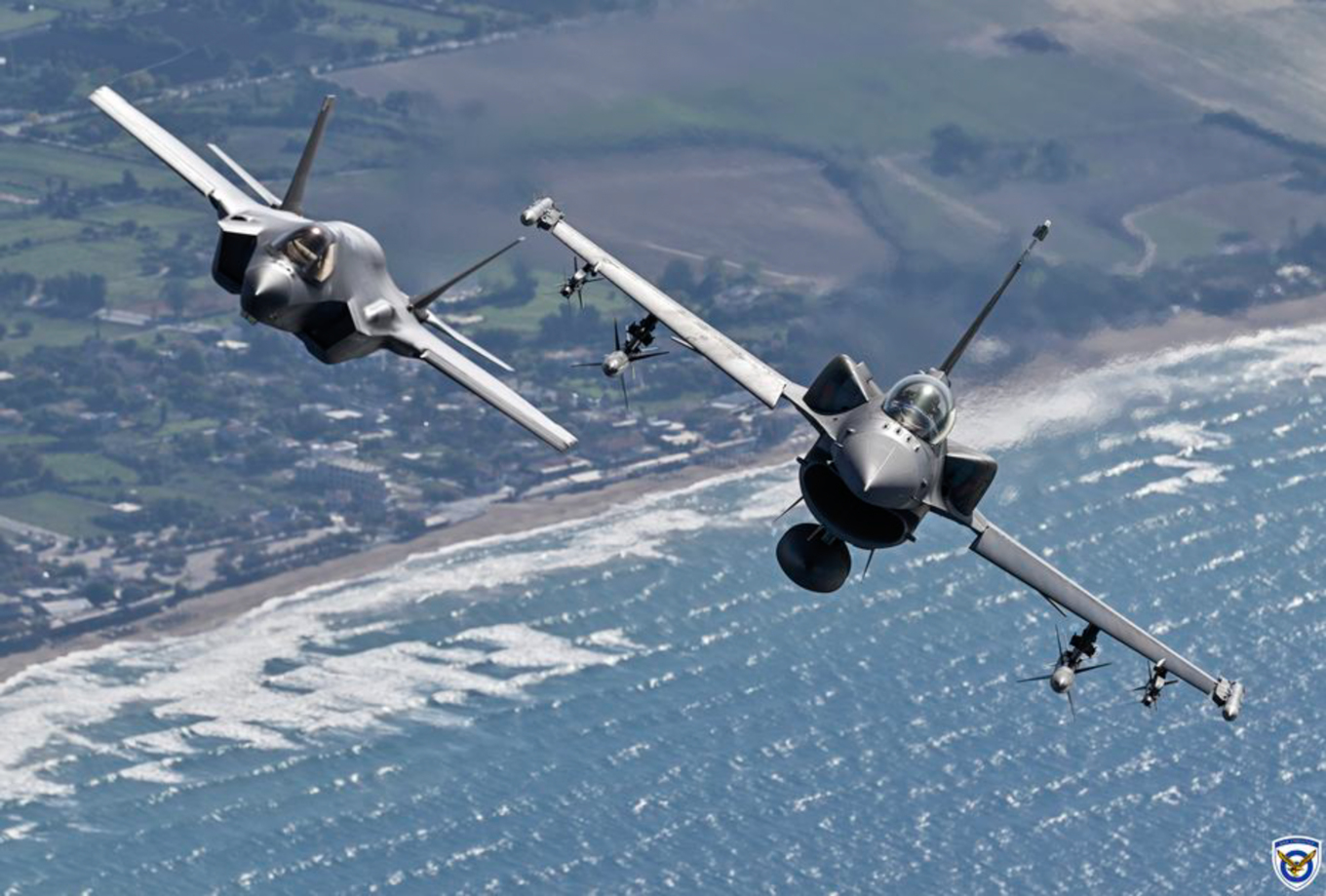
Defense Minister Nikos Dendias recently discussed the creation of two protective domes for the country (one for missiles and one for drones) for which 2 billion euros have been allocated. “This anti-aircraft dome will cover the country with mobile units, using as an advantage what is considered at first a disadvantage: the 2,500 islands we have, aside from the mainland,” he said at an event in Piraeus. Describing the thinking behind developing this type of defense, Dendias said in an interview that “it was clear, observing the wars in Ukraine and Gaza, that the country needed anti-aircraft and anti-drone coverage. Imagine it like a church with two overlapping domes.”
Regarding anti-drone systems, it is worth noting that four systems will be used, one of which is expected to be the anti-drone system “Centaur,” whose prototype was successfully used in combat conditions in the Red Sea, shooting down Houthi drones, and is set to equip the Greek frigates.
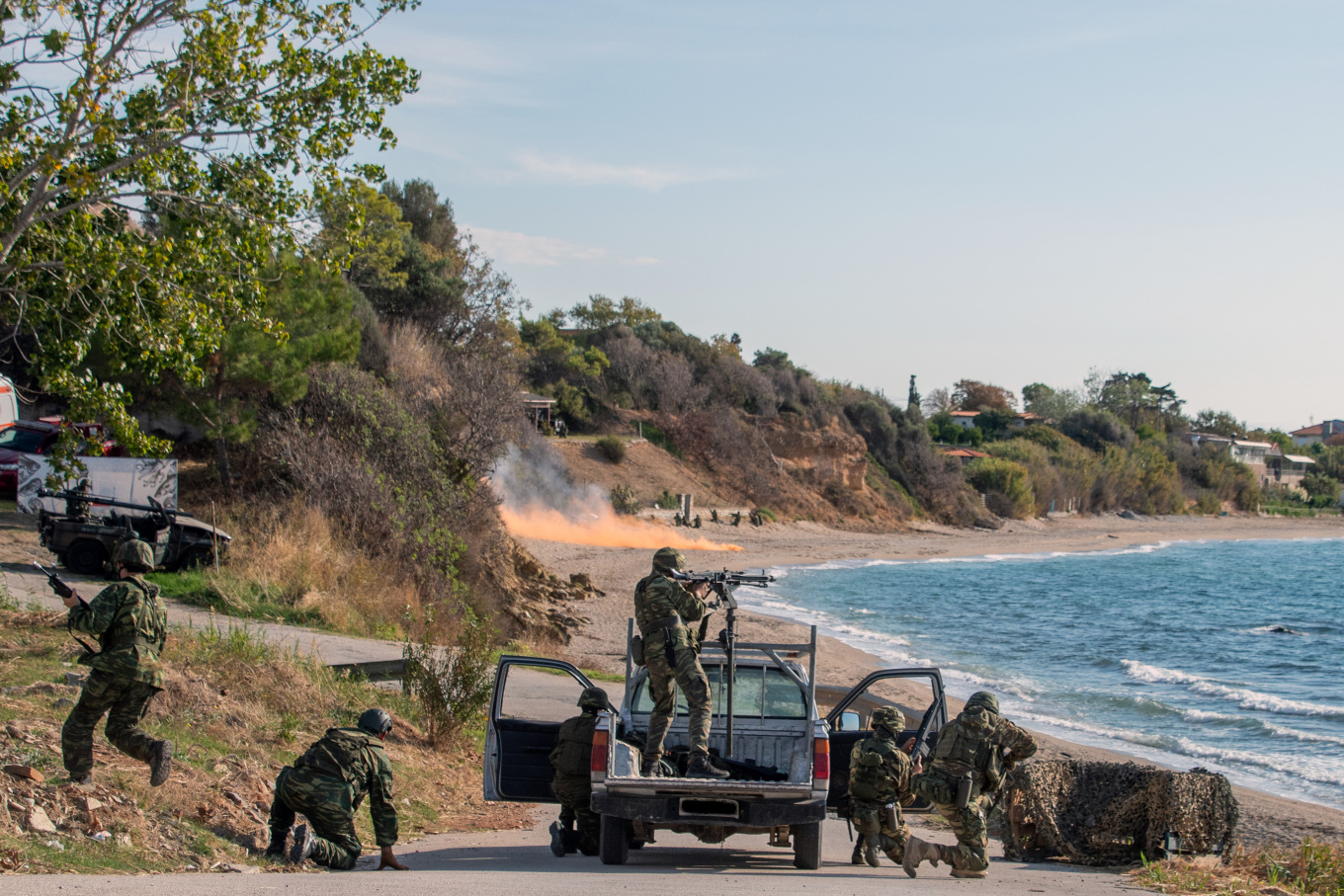
200 F-35s, Rafale, Viper, and New Frigates
For the Navy, the Defense Minister revealed that its new structure will feature a ceiling of 16 main strike units, as well as the capability for strategic strikes with SCALP Naval missiles, creating the strongest Navy since the founding of the Greek state.
“Regarding the Navy, there will be a huge strengthening. The Navy will acquire strategic strike capabilities that it has never had in the history of Hellenism. I will explain ‘privately’ what this is. And it will also acquire Area Air Defense capabilities. Again, I will explain privately what this means. It will be able to project its power. Not just defend the Aegean. Let me get to the main programs. You know most of them. It’s the modernization of the MEKO frigates, the modernization of the submarines, the modernization of the missile boats, the new Constellation-class frigates being designed with the United States, the new corvettes being designed with the European Union, and the new submarines, for which we’ve started initial talks. All these programs will bring about 6 or 7 billion euros to the Greek shipbuilding industry over the next ten years, front-loaded.”
Regarding the Air Force, Mr. Dendias stated that “Air Force General Georgiadis has pushed a program to homogenize the types, aiming for a fleet of 200 4.5th and 5th-generation aircraft, which includes modernized Vipers, Rafales, and F-35s.” The goal here is uniformity, which recalls the recent statements made by the Minister about an upcoming effort to sell off the F-4 Phantom jets, as well as older F-16 Block 30s and Mirage 2000-5s, replacing them with the most modern aircraft currently available.
The plan envisions the Air Force’s fleet consisting of 120 F-16 Vipers (which are currently undergoing modernization to 4.5th-generation standards), 20 F-35s, with another 20 to follow in the second phase, as well as 24 Rafales (already in service), plus 16 more 4.5th-generation aircraft expected to be ordered (though Dendias had previously mentioned the possibility of 30 Rafales).
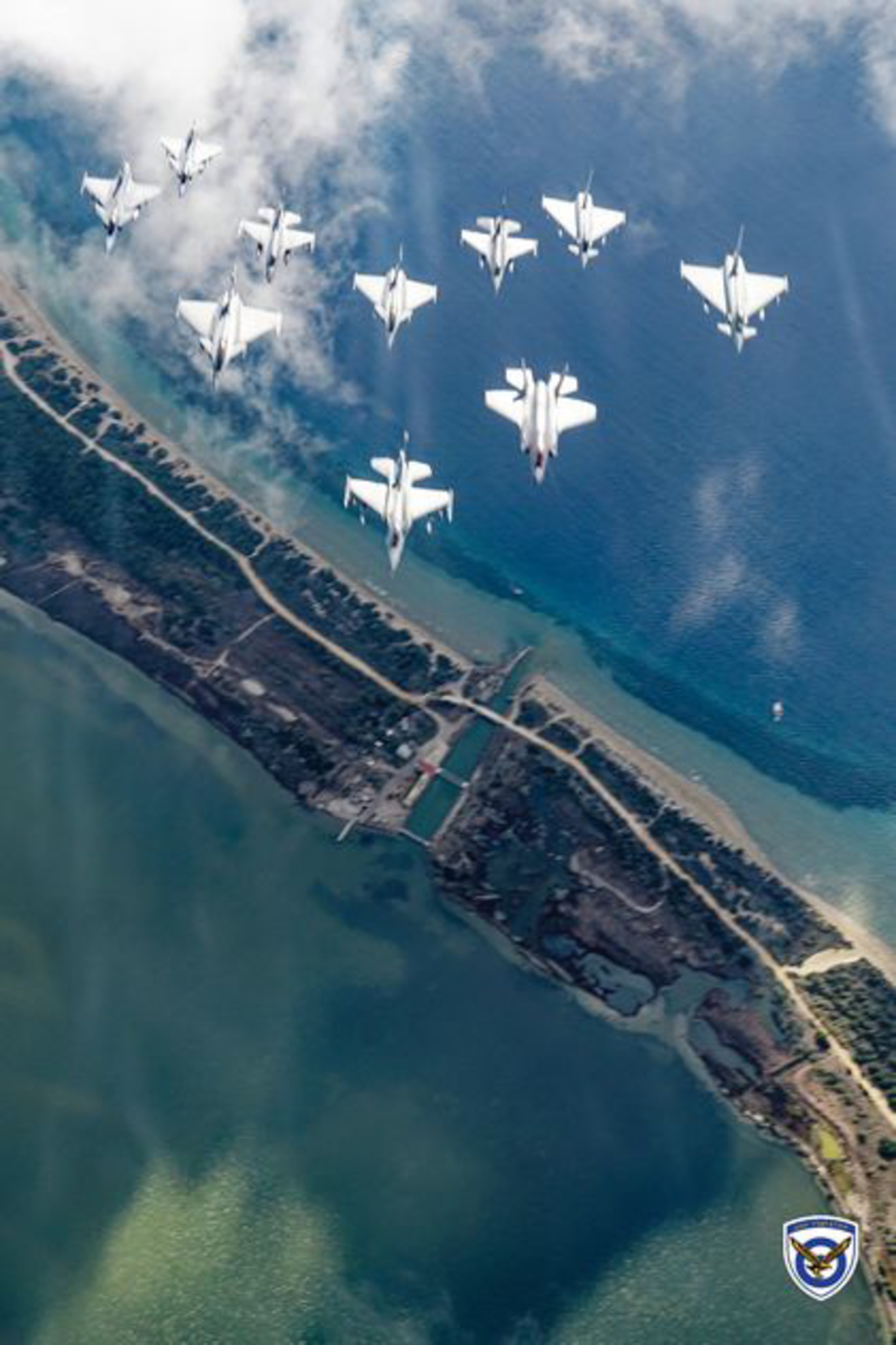
Satellites, Drones, and Fewer Bases
“We’re entering the drone era. Each unit of the Greek Army will have anti-drone capabilities, and 3 out of the 4 types of battalions we’re creating will have the ability to deploy drones,” said the Defense Minister.
Our country will acquire a communications satellite that will be used by the Armed Forces. According to Mr. Dendias, “to operate the systems, we need to switch to hidden satellite communications, we need to go to a Greek satellite” and that “we need to develop defensive and offensive cyberwarfare capabilities.”
At the troop level, the establishment of Cyber Units (Unit 1864), Electronic Information Units (Unit 1821), Space Applications Units (Unit 1912), Human Source Intelligence Collection Units (Unit 1947), as well as the creation of a Joint Information Corps and Information Directorate stands out. Additionally, there will be a reorganization—merging and closure of 132 bases and units, out of a total of 837, while changes will also be made to military service and reserves, and an increase in staffing levels across units.
Here is the translation of the Greek text you provided:
As Mr. Dendias explained: “We are moving towards flexible units with full staffing. Right now, there are units in Evros with staffing below 30%, and one unit in the Peloponnese with 130%. It doesn’t make sense to have 800 military bases, more than the US. I need help; I know what it’s like to close bases. We’re moving towards closing 137 bases, and this will be completed by 2025. We’re doing this because we don’t have the funds to close another 250. At the same time, we will abolish over 30 formations and consolidate others.”
He explained, “During the 10 years of the crisis, we lost 2.5 billion euros per year, resulting in a total deficit of 20 billion. Wherever private assistance is available, it’s welcome. This year, we will surpass 20 million euros. The potential threat has a budget of 40 billion euros. We estimate that we will achieve 2 billion euros in savings over the next decade from operational expenses, and that’s the pessimistic scenario.” He described the need for a new approach: “The numbers lead to the need for the country to address a threat from a population nine times larger, and this requires innovation.”
Military Justice Reform:
A separate chapter focused on the reform of military justice. Mr. Dendias commented, “There can’t be a naval court in Ioannina. There is a series of naval courts, military courts, and air force courts that serve no purpose. The average number of military cases is five per year, while political judges handle 25 cases per month.”
He stated, “We must reform the system—balance sheets, accountability, transparency. We will proceed with innovative approaches to the best trauma care unit. We will utilize the research of a Greek professor at Harvard, who treated victims of the Boston Marathon attack. There may also be another similar American unit in Germany.”
He announced a program to support the families of military personnel, “the best in the public sector,” referring to the changes in military schools: “Despite the quadrupling of compensation and infrastructure improvements, if we don’t change the career path and the way we support the system, in 10 years we won’t have any personnel.”
This translation captures the essence of his statements about military reforms and structural changes in Greece’s defense system.
Ask me anything
Explore related questions
